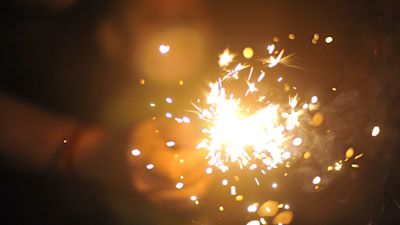Explainer
How to stay safe on Bonfire Night and what to do if someone is injured by a firework

Bonfire Night is upon us once more.
The colourful night's sky, big coats and scarfs, and the smell of toffee apples next to the bonfire will officially mark the start of cosy season.
But, while it's great to gather with friends and family, sometimes the centuries old tradition can turn ugly and people can get hurt because they didn't take proper safety precautions.
So, here are some top tips to ensure that everyone stays safe at home, or at an organised fireworks display.
How to keep safe around fireworks
It is recommended that you avoid fireworks at home, however, if you do put on your own display, the fire service ask people to make sure that you stick to the Fireworks Code:
Buy fireworks marked CE
Ideally attend an organised display
Fireworks must not be sold to any person under the age of 18
Keep fireworks in a closed metal box and use them one at a time
Read and follow the instructions on each firework
Light the fireworks at arm’s length with a taper and stand well back
Keep naked flames, including cigarettes, away from fireworks
Never return to a firework once it has been lit
Never put fireworks in your pocket
Never throw fireworks
Light sparklers one at a time and wear gloves
Keep a bucket of water nearby at all times
Alcohol and fireworks do not mix and may lead to injury
Keep pets indoor.
Other Bonfire safety tips:
Buy fireworks from a licensed retailer
Always supervise children around fireworks
Never give sparklers to a child under the age of 5
Prepare for the party in advance, and in daylight. On the night you will need a torch, a bucket of water, eye protection and gloves, a bucket of soft earth to put fireworks in and suitable supports and launchers if you're setting off Catherine wheels or rockets
Leave the lighting of fireworks to responsible adults only
GMFRS runs a fireworks amnesty during the Bonfire period by allowing members of the public to dispose of fireworks safely. Contact GMFRS on 0800 555 815 to have them safely collected.
What do I do if someone has been burned or scalded from a firework?
Burns are the most common injury at fireworks displays. All types of fireworks pose a serious risk of causing injury. According to the NHS, if someone has a burn or scald:
Move the person away from the heat source
Place the burn or scald under lukewarm water for at least 20 minutes. Do not use ice, iced water, or any creams or greasy substances like butter.
Remove any clothing or jewellery that's near the burnt area of skin, including babies' nappies, but do not move anything that's stuck to the skin
Make sure the person keeps warm by using a blanket, for example, but take care not to rub it against the burnt area.
Cover the burn by placing a layer of cling film over it – a clean plastic bag could also be used for burns on your hand
If the face or eyes are burnt, sit up as much as possible, rather than lying down – this helps to reduce swelling
Monitor and treat for shock if necessary
If the burn is: to a child; larger than your hand; on the face, hands, or feet; or is a deep burn, arrange a trip to hospital or call 999